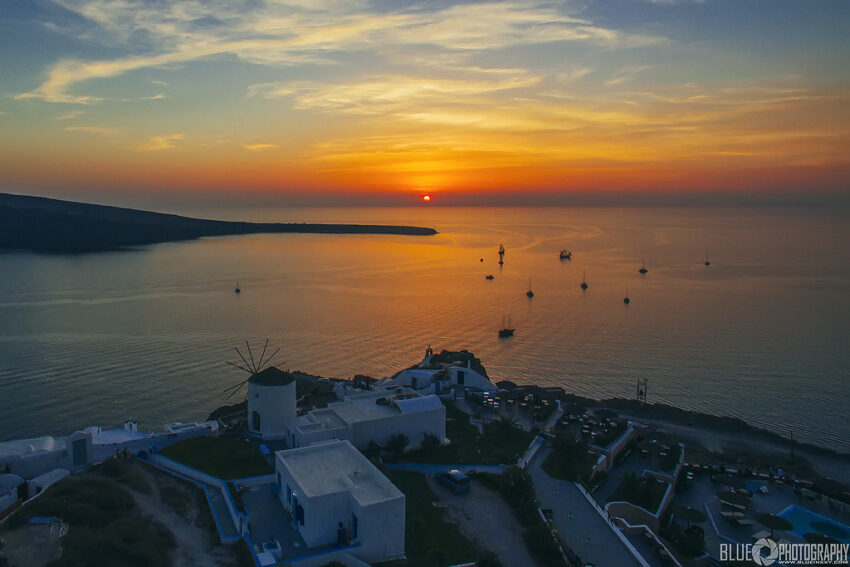
Santorini, Greece is a small spot of crowded white houses, dotted by pastel colors here and there. Squared, blue windows reflect the warm sunlight, leaving kaleidoscope-like shapes across the cobblestone floor. The island of Santorini is a blossoming flower in the middle of the dark blue Aegean sea, once destroyed by the vast force of nature around 1550 BC.
As you quietly sit in the peaceful greek town of Oia, it’s almost impossible to imagine the serene island ever facing any devastating disaster. Around, the sunset contrast with the golden town lights and the blue globe-shaped rooftops almost shimmer against the night sky.
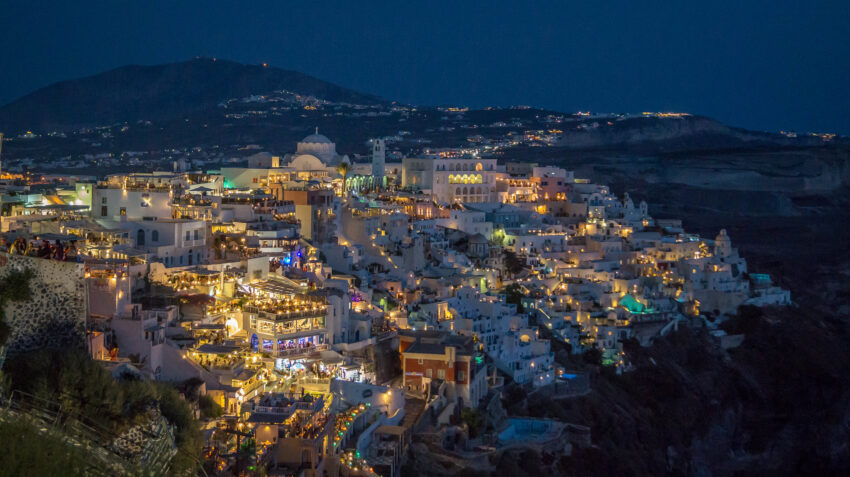

Activity/Place Highlights
Lost city of Atlantis?
Santorini, known as Thira to locals, is basically what remains after a volcanic eruption destroyed what used to be a bigger island. The Minoan civilization had established on the island before 2000 BC. For this reason, many believe that Santorini’s ancient city of Akrotiri might be Plato’s sunken city of Atlantis. In fact, and before you call me crazy, scientists, geologists and archaeologists created these conspiracy theories.
Akrotiri, Santorini
The excavation of Akrotiri is one of the most important and well-preserved prehistoric settlements of the Aegean. Besides, it’s open to the public so you can walk and admire the sheltered city.
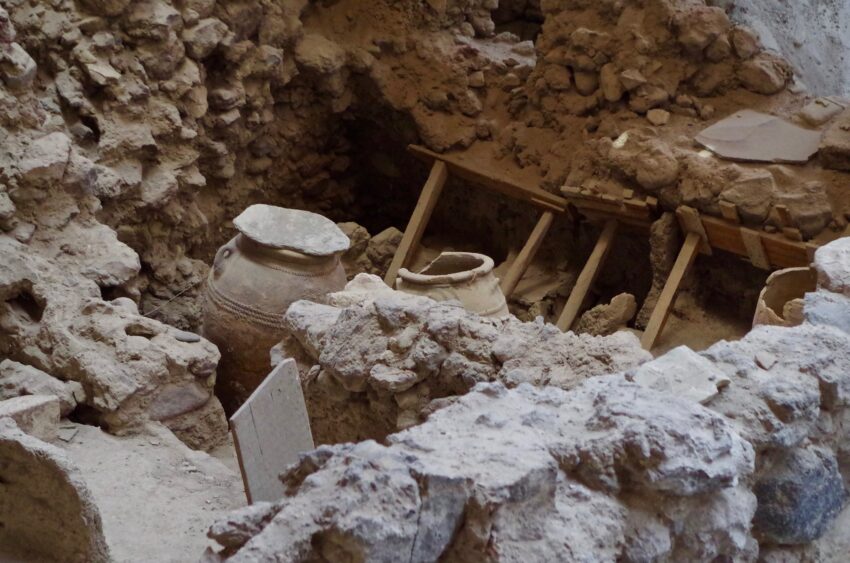
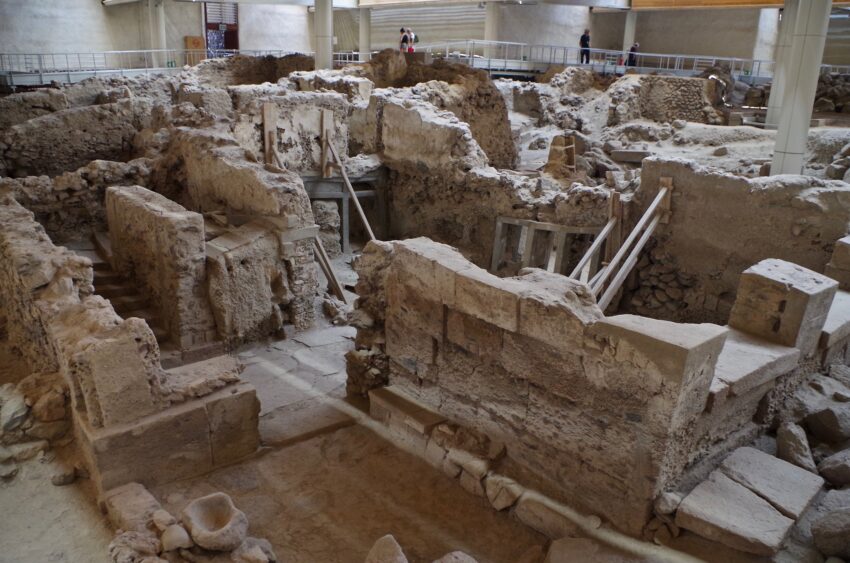
The halfmoon-shaped island of Santorini and its archipelago are formed from the circular caldera of the volcano that destroyed the island all those years ago. The circle is divided in some places and, overflowed by the sea, becomes a natural harbor. It’s so wide that those ferries and cruise ships visiting are surprisingly belittled and appear like toy boats.
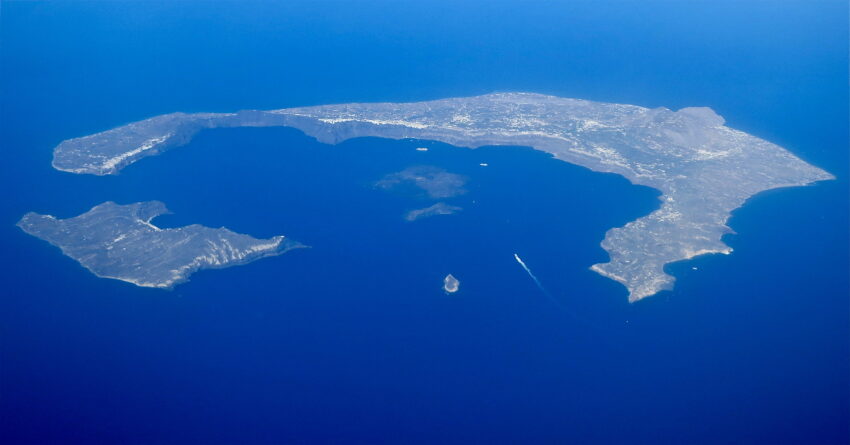
Nea Kameni
You can reach the center of the volcano by a short boat trip. There are two small islands in the middle of the water-filled caldera. Nea Kameni and the smaller Palea Kameni. Here, you can walk around the rocky surface and stand right next to the mouth of the volcano. It is still steaming and menacing to erupt at any given moment like most steaming volcanoes.
However, the last eruption happened in the 1920s, and an earthquake devastated the island in 1956. But even after going through all those disasters, the town stands, looking as beautiful and immaculate as ever.
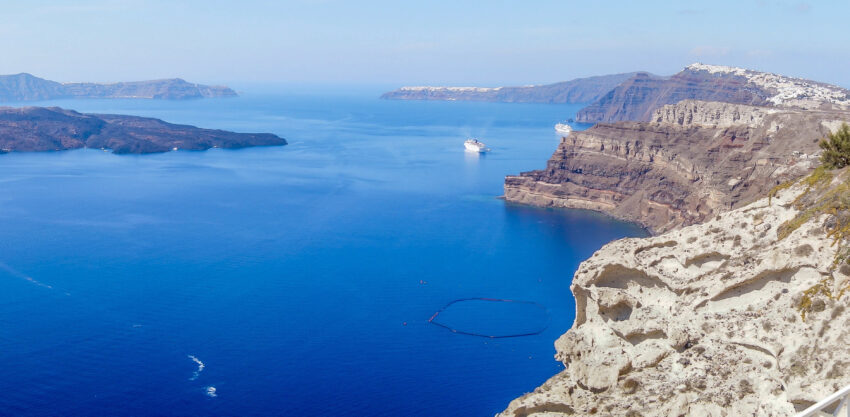
Satistying symmetry
The walls of the caldera rise up to 300 meters above the sea level. The highest cliffs are at Fira, Santorini’s capital, and at the town of Firostefani. Overlooking the bright blue waters below, the houses on these towns were built just at the rim of the caldera in a diagonal, almost completely vertical way. Although one would think this might not be a pretty sight, the symmetry of the houses and buildings, and the pretty colors of their walls make this arrangement extremely pleasing to the eye.
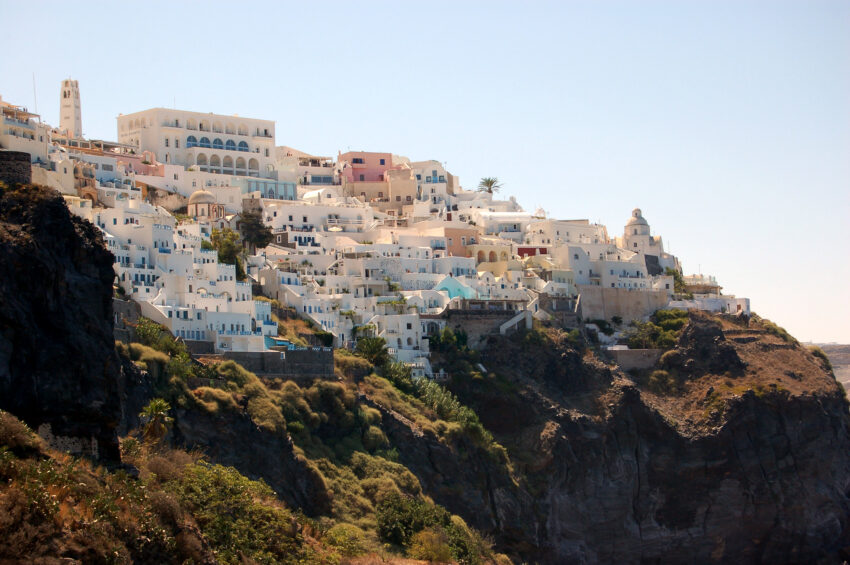
Funny donkey rides
Each of the seventeen towns and villages have their own harbor at the foot of the cliffs. You can reach them by walking the zigzagging paths from the top. Fira, on the other hand, has a modern cable car now. Only tourists from cruise ships and ferries take the long hike up to the town.
But if walking is not your cup of tea, you can rent a donkey from one of the cranky old men leading their mounts up and down the paths. But watch out; at sunset, the donkeys gallop out of Fira, happy to be going back down, and they don’t care about who crosses their path. Be careful if you don’t want to be run over by one of those peculiar animals.
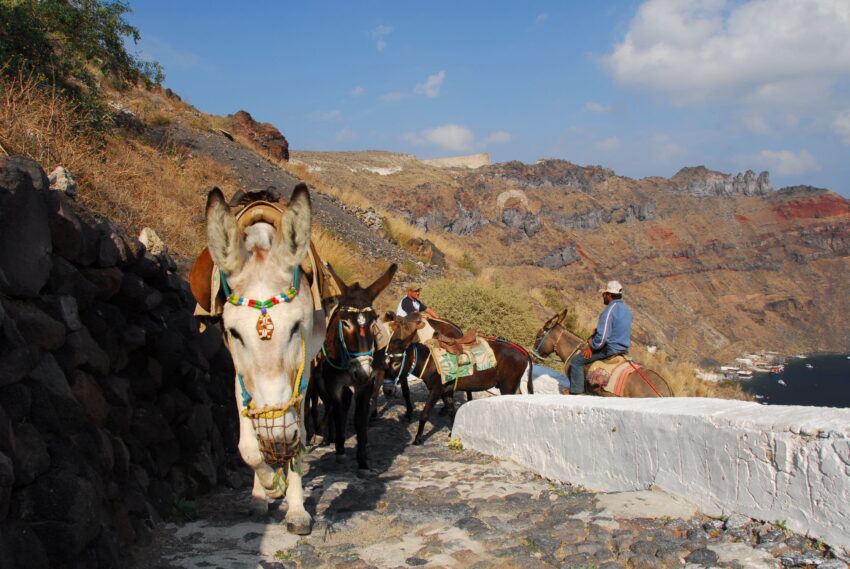
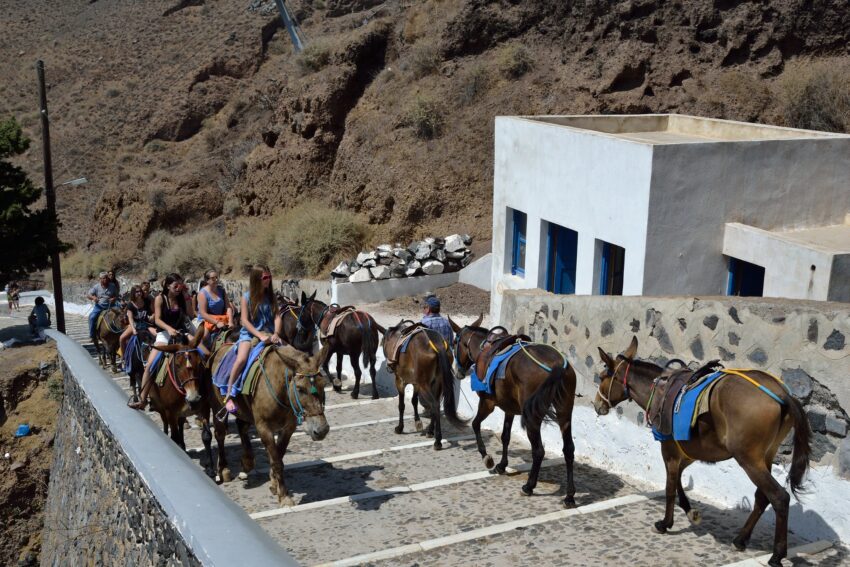
The Religious Santorini
Santorini is known for its famous white-walled churches, topped by blue domed rooftops. They are frequently photographed contrasting against the dark blue waters of the Aegean sea. There are so many churches on the little island that you sometimes wonder if there is some kind of rivalry or feud between the local people, preventing them from going to the same one.
Most of these churches are still active, and you will surely see priests dressed in all black, with their distinctive grey beards, walking hurriedly from church to church.
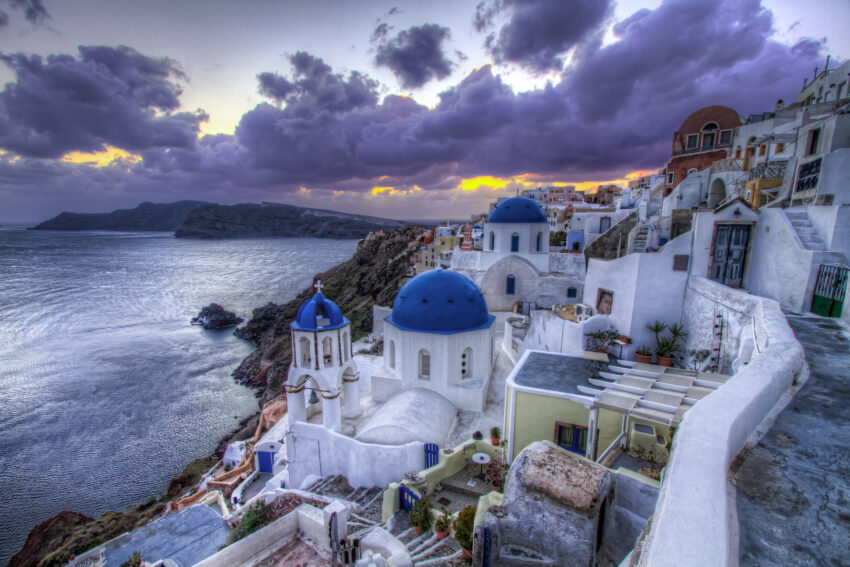
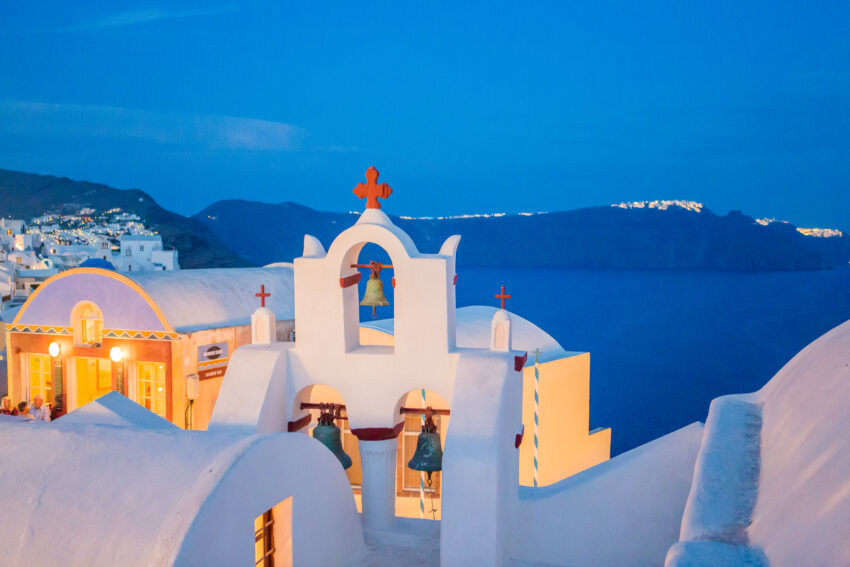
The Oia village
Various places in the world have been taken over by the tourist business, and Santorini is not the exception. As a result, most of the fishermen cottages have been turned into hotels, guest houses, and restaurants. However, the island remains faithful to its original character and past. The Oia village especially still has its local people living among the tourist places; you can still see baskets filled with colorful flowers; fishing nets waiting to be repaired hanging outside some of the remaining cottages; and shy cats dozing off in tiny front yards.
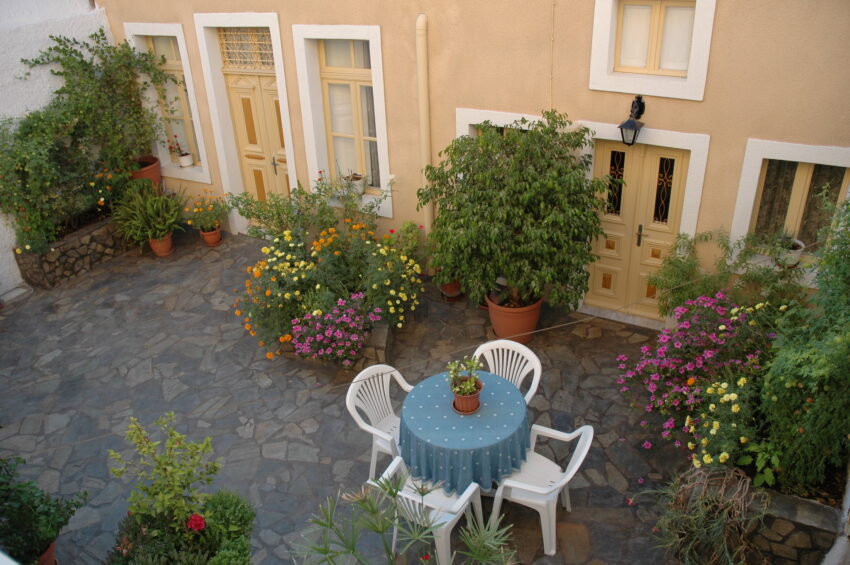
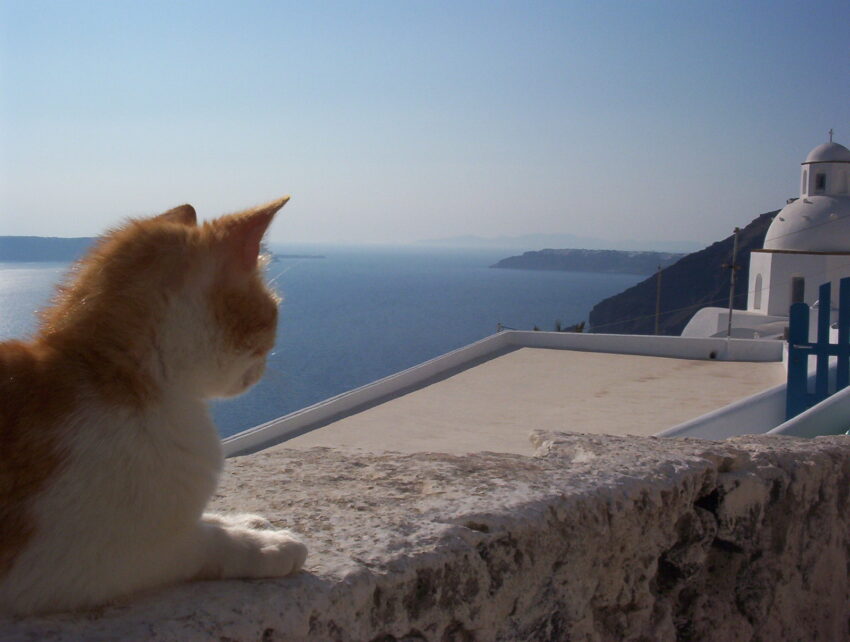
How to get there
You can easily reach Santorini by ferry or taking an internal flight from Athens on Olympic Airways, and during the summer, there are direct flights from European airports.
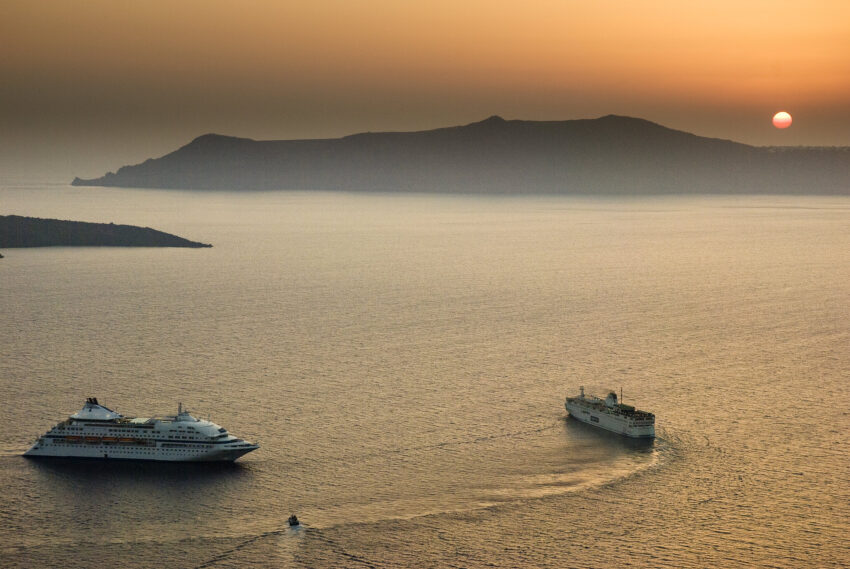
Planning
During the summer months, it’s a bit harder to find accommodation. Therefore, booking in advance is recommended if you plan to spend a couple of summer days on the island. Above all, one of the best hotels in Fira is the Santorini Palace, built especially to overlook the caldera and the calm waters.
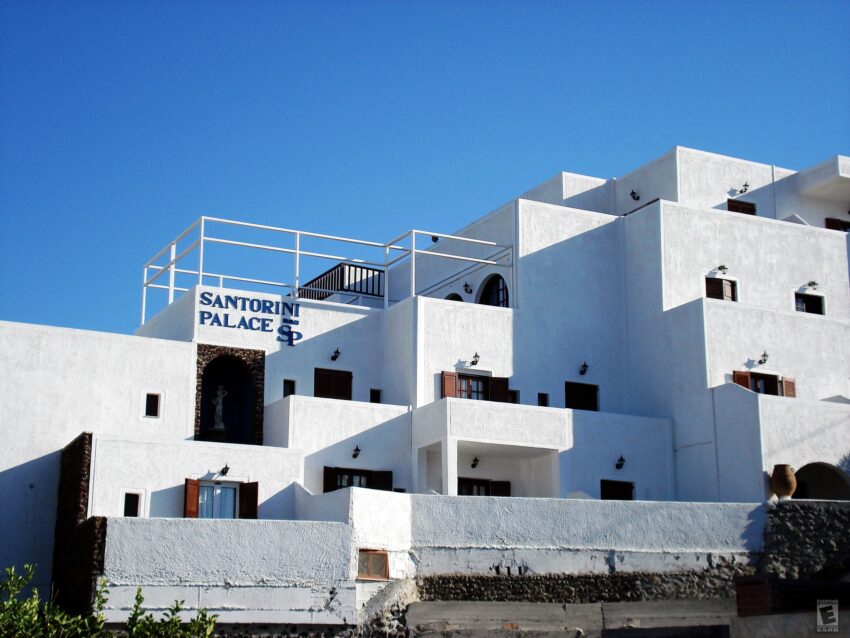
Even though it is such a small island, the amount of culture and history Santorini holds, and all the things to do and see makes it impossible to truly experience the area in just a couple of days. The island has so many wonders you will surely leave hoping to go back soon until you explore every single corner.
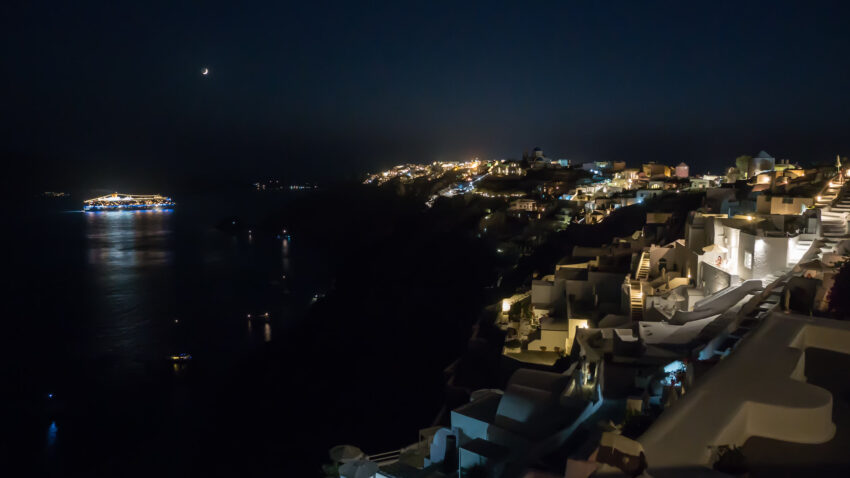
If you loved this article or found it useful, don’t forget to share it with your adventurous and travel-hacking friends! If you want more posts like this, follow us on Youtube, Instagram, Pinterest, Twitter or Facebook and subscribe to our newsletter!

